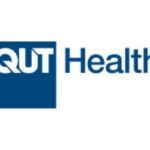Our Work
The bridge program
Interactive simulation to increase learning outcomes

Activating a three-day international pharmaceutical conference with 100 delegates in a first-of-its-kind experience. Over the conference, the simulation unfolded in a series of carefully curated interactions as delegates competed for a deal.
Design elements
- Designed fictional marketplace with integrated technology to navigate research, deals and meetings
- Integrated into conference agenda
- Gamified design to mirror industry challenges and pitfall
Participants: 100 leading scientists, researchers and technology transfer professionals; 15 senior pharmaceutical company representatives
Competition to ensure buy in and ongoing engagement
Stakeholder buy in from 15 pharmaceutical companies, government agencies and technical program staff
Purposeful application of digital technology
Content alignment to real world challenges
Successful outcomes with positive feedback from industry and delegates
The situation and narrative
In the simulation small development teams from fictional companies were handed an early-stage prospective drug and challenged to negotiate a license or buy-out deal with one of five major Pharma companies in a competitive marketplace.
Mirroring a real market place, teams had to manage flaws within their early stage products, the competition with other teams working on similar products and limited resources. New information that affected teams from a funding, legal and governance perspective was introduced periodically via team tablets. Teams had to respond to these changes, adapting their approach to give them best chance of success.
How the narrative unfolded
Teams were presented with their company ‘pack’ which outlined their objective and product. Immersive elements were considered, including company branding, business cards and company email addresses. Individuals were given key roles within their Companies in order to direct their time, energy and expertise.
Teams had dedicated time in which they could understand their product, perfect their pitches and seek mentorship from Consortia members. This was curated within a workshop format, facilitated by a key Consortium member. Teams were then challenged to meet with Pharmaceutical company representatives (members of the consortium) and eventually negotiate a deal to progress their product to market.
There were 18 teams within the simulation. There were five prospective deals available. Teams had to work effectively and efficiently to win a deal over the course of the conference.
Using digital technology
Our customised app was used to facilitate and track all interactions. It was branded to the Bridge Program and simulation. Each team had a dedicated tablet to use through the three days that was used to:
- Gather and dissect information in order to make strategic decisions
- Rate interactions and meetings between themselves and pharmaceutical representatives
- Facilitate dynamic communication between teams and facilitators
Meeting the design challenge
Being a new engagement format within a pharmaceutical conference setting, it was imperative to ensure that the simulation aligned with the overall objective of the program and was accurately representative of the sector at large.
There were three key challenges to consider in ensuring the success of this simulation.
1. Stakeholder buy-in
There were a wide range of stakeholders involved in the Bridge consortium including representatives from the 15 pharmaceutical companies supporting the program, major universities, Government agencies and technical program staff.
In order to mimic real world dynamics, our goal was to give an active role to most of these stakeholders within the simulation. We asked them to play the part of Companies or support agencies negotiating deals with the delegate teams.
We overcame this challenge by engaging key players within the Bridge Consortium, spending time listening to their feedback and explaining in detail our own approach. Given their in-depth understanding of the industry, years of experience and individual expertise, they became our biggest assets in ensuring the success of the simulation. After finding our champions within the group, we communicated our design strategy, roll out plan and risk mitigation through clear simulation design documentation and meetings.
2. Content alignment to real life challenges
Another challenge was ensuring that the content presented to the participants was an accurate representation of the real-life marketplace for pharmaceutical technologies and an appropriate representation of the challenges facing researchers and entrepreneurs.
We consulted with the educational professional writing the content of the program to overcome this challenge. In co-creating the content, we had an accurate basis to work from. We also sense checked our thinking from other Bridge Consortium members involved in the program.
3. Working within the conference agenda
The Conference agenda was busy, so finding enough time within the agenda to run the simulation was difficult. We cleverly mirrored presented content with the flow of the simulation while thinking carefully about what interactions would be most valuable to participants. We then designed parts of the simulation to run concurrently within the rest of the agenda to keep momentum and create moments of discussion and networking between the representative companies and delegates.




